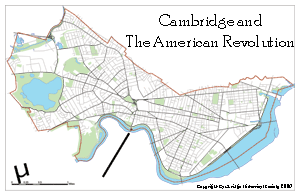The Great Bridge
In the pre-Revolutionary era, the Great Bridge was the only bridge connecting Boston and Cambridge. Although it no longer stands today, the Larz-Anderson Bridge near Harvard Square is located where the Great Bridge once stood. However, unlike the modern bridge, the Great Bridge was built of wood planks. Being the only passage between Boston and Cambridge, it was much wider than the Larz-Anderson constructed over a free-flowing Charles River before it was dammed.
On the night of April 18, 1775, on the eve of the first battle of the American Revolution, Cantabridgians got word of the encroaching British troops and flocked to the Great Bridge. Being the only connecter between the city and town, they knew that dismembering it would, in the very least, delay the British soldiers on their march to Concord. However, being prudent individuals, the Cambridge citizens did not destroy the wooden planks of the Great Bridge; they simply laid them on the side of the road. The British merely re-placed the planks and continued on their way.
Following the Lexington battle, as the British retreated toward Boston, the Cambridge militia, under the command of General Heath, secured the Bridge in preparation for the fleeing soldiers’ march to Boston. Their second attempt to impede the British was much more successful. Gunfire was exchanged and there were casualties on both sides.
 |
Back to Interactive Map |
